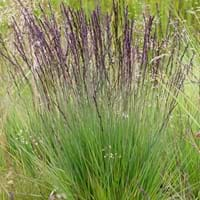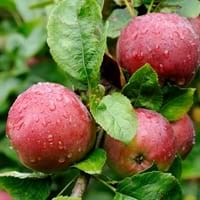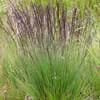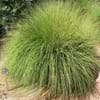Life Span
Perennial
Perennial
Origin
Asia, Europe, North Africa
Eastern Europe, Southern Europe, Russia/Siberia, Southern Asia, Western Asia
Types
purple moor-grass 'Moorhexe', variegated purple moor-grass
not available
Habitat
Boggy areas, Dry and Young forest Heaths, Lowland
Not Available
USDA Hardiness Zone
4-8
3-8
Sunset Zone
1a, 1b, 2a, 2b, 3a, 3b, 4, 5, 6, 7, 8, 9, 14, 15, 16, 17
6, 7, 8, 9, 14, 15, 16
Habit
Clump-Forming
Oval or Rounded
Flower Color
Dark Purple
White, Pink, Rose
Flower Color Modifier
Bicolor
Bicolor
Fruit Color
Non Fruiting Plant
Yellow, Red, Green, Gold, Pink, Dark Red
Leaf Color in Spring
Green, Dark Green
Green
Leaf Color in Summer
Light Green
Green
Leaf Color in Fall
Green, Yellow green, Gold
Green, Light Yellow, Brown
Leaf Color in Winter
Tan
Light Green
Leaf Shape
Needle like
Ovate
Plant Season
Spring, Summer, Fall, Winter
Spring, Fall
Sunlight
Full Sun, Partial Sun
Full Sun, Partial Sun, Partial shade
Growth Rate
Medium
Medium
Type of Soil
Clay, Loam, Sand
Clay, Loam, Sand
The pH of Soil
Acidic, Neutral
Acidic, Neutral
Soil Drainage
Average
Well drained
Bloom Time
Late Spring, Summer, Late Summer, Early Fall, Fall
Early Spring, Spring
Tolerances
Not Available
Drought
Where to Plant?
Ground, Pot
Ground
How to Plant?
Divison, Transplanting, Vegetative Reproduction
Budding, Grafting
Plant Maintenance
Low
Medium
Watering Requirements
Requires regular watering, Water more frequently during periods of extreme drought
Requires regular watering
In Summer
Lots of watering
Lots of watering
In Spring
Moderate
Moderate
In Winter
Average Water
Average Water
Soil pH
Acidic, Neutral
Acidic, Neutral
Soil Type
Clay, Loam, Sand
Clay, Loam, Sand
Soil Drainage Capacity
Average
Well drained
Sun Exposure
Full Sun, Partial Sun
Full Sun, Partial Sun, Partial shade
Pruning
Prune in winter, Remove damaged leaves, Remove dead branches, Remove dead leaves
Remove damaged leaves, Remove dead branches, Remove dead leaves
Fertilizers
No need to fertilize every year
Requires high amount of nitrogen
Pests and Diseases
Pests and diseases free
Aphids, codling moth, mussel scale, Red spider mite, woolly aphid
Plant Tolerance
Not Available
Drought
Flower Petal Number
Single
Single
Foliage Texture
Fine
Medium
Foliage Sheen
Matte
Matte
Attracts
Not Available
Not Available
Allergy
Not Available
Not Available
Aesthetic Uses
Showy Purposes, Water gardening
Showy Purposes
Beauty Benefits
Not Available
Not Available
Environmental Uses
No fertilizer, pesticides, or herbicides needed
Air purification
Medicinal Uses
No Medicinal Use
Alzheimer’s Disease, bowel syndrome, Cancer, constipation, Detoxifies lever, Diabetes, Diarrhea, gallstones, Healthy teeth, hemorrhoids, High cholestrol, Immunity, Improve heart health, Parkinson
Part of Plant Used
Whole plant
Fruits, Leaves
Other Uses
Used as Ornamental plant
Used As Food, Used for its medicinal properties
Used As Indoor Plant
No
No
Used As Outdoor Plant
Yes
Yes
Garden Design
Container, Foundation, Mixed Border
Edible, Feature Plant, Fruit / Fruit Tree
Botanical Name
Molinia caerulea
MALUS domestica 'Royal Gala'
Common Name
purple moor-grass
Apple, Eating Apple, Royal Gala Apple
In Hindi
बैंगनी दलदल घास
Royal Gala Apple
In German
Pfeifengras
Royal Gala Apfel
In French
pourpre lande-grass
Royal Gala d'Apple
In Spanish
púrpura amarra-hierba
Manzana Royal Gala
In Greek
μωβ Moor-γρασίδι
Royal Gala της Apple
In Portuguese
purple moor-grass
Maçã Royal Gala
In Polish
fioletowy Moor-trawa
Royal Gala jabłko
In Latin
Maurus herba-purpura,
Regia Schola Apple
Phylum
Magnoliophyta
Magnoliophyta
Class
Liliopsida
Eudicotyledones
Genus
Molinia
Not Available
Clade
Angiosperms, Commelinids, Monocots
Not Available
Tribe
Not Available
Not Available
Subfamily
Not Available
Not Available
Number of Species
Not Available
Not Available
Season and Care of Molinia Caerulea and Royal Gala Apple
Season and care of Molinia Caerulea and Royal Gala Apple is important to know. While considering everything about Molinia Caerulea and Royal Gala Apple Care, growing season is an essential factor. Molinia Caerulea season is Spring, Summer, Fall and Winter and Royal Gala Apple season is Spring, Summer, Fall and Winter. The type of soil for Molinia Caerulea is Clay, Loam, Sand and for Royal Gala Apple is Clay, Loam, Sand while the PH of soil for Molinia Caerulea is Acidic, Neutral and for Royal Gala Apple is Acidic, Neutral.
Molinia Caerulea and Royal Gala Apple Physical Information
Molinia Caerulea and Royal Gala Apple physical information is very important for comparison. Molinia Caerulea height is 120.00 cm and width 30.00 cm whereas Royal Gala Apple height is 370.00 cm and width 460.00 cm. The color specification of Molinia Caerulea and Royal Gala Apple are as follows:
Molinia Caerulea flower color: Dark Purple
Molinia Caerulea leaf color: Green and Dark Green
Royal Gala Apple flower color: White, Pink and Rose
- Royal Gala Apple leaf color: Green
Care of Molinia Caerulea and Royal Gala Apple
Care of Molinia Caerulea and Royal Gala Apple include pruning, fertilizers, watering etc. Molinia Caerulea pruning is done Prune in winter, Remove damaged leaves, Remove dead branches and Remove dead leaves and Royal Gala Apple pruning is done Remove damaged leaves, Remove dead branches and Remove dead leaves. In summer Molinia Caerulea needs Lots of watering and in winter, it needs Average Water. Whereas, in summer Royal Gala Apple needs Lots of watering and in winter, it needs Average Water.





